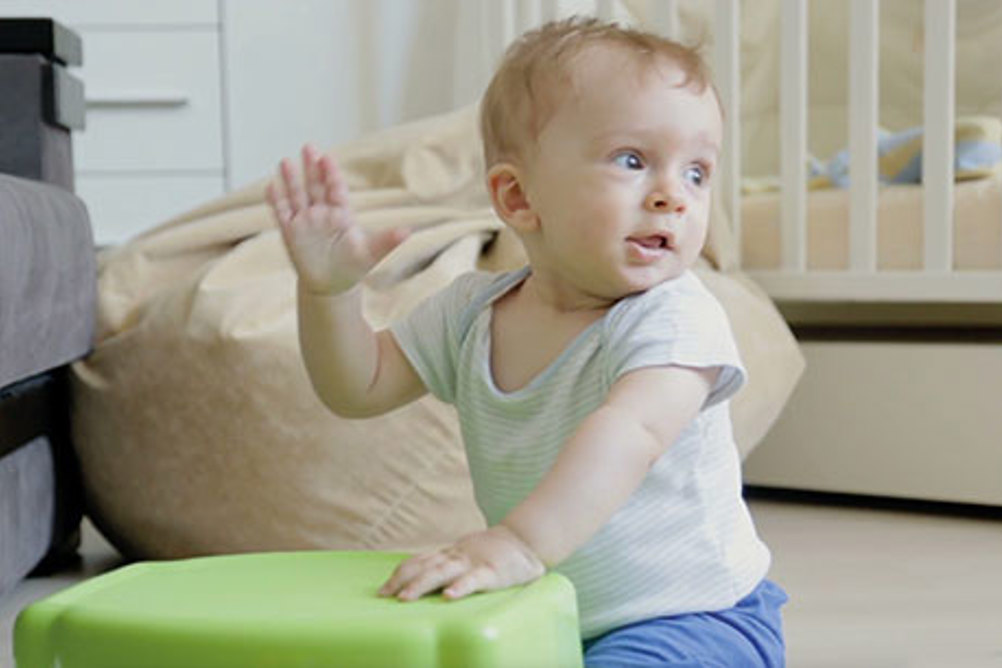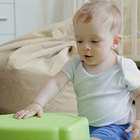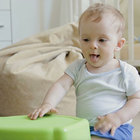
Download the PDF of Music, part 6: Pitch In
The way in which mathematics has traditionally been taught often makes it difficult to think of it as a creative or aesthetic subject. Few of us would link it to poetry, but Albert Einstein described mathematics as ‘the poetry of logical ideas’. Henry David Thoreau, the 19th century American poet and philosopher, wrote, ‘We have heard much about the poetry of mathematics, but very little of it has yet been sung.’
Mathematics, like music, fills our everyday lives. It’s central to shopping, to travel, decorating, knitting, carpentry, sport and politics. Mathematician Keith Devlin (2000) goes so far as to say that ‘mathematics is not about number but about life’. And he is right in so far as mathematics is also about problem-solving, reasoning, logic and intuition, as well as pattern and comparison – all of which can be found in musical activity.
Of course, mathematics is in part about number as Leibniz, a 17th century thinker and philosopher, noted, ‘Music is the pleasure the human mind experiences from counting without being aware that it is counting.’ Many mathematicians, psychologists and philosophers agree that mathematics arose in human thinking from cultural and biological activity. Rhythmic movement – walking and dance – undoubtedly played a part. Fingers also had a role. It is no accident that we use the same word, digit, for fingers and numbers.
 MUSIC, MATHS AND THE PRIME AREAS
MUSIC, MATHS AND THE PRIME AREAS
In previous articles in this series, the role that music plays in supporting areas of learning has been explored. Because mathematics is so fundamental to everyday life, it is unsurprising that the musical experiences within the Prime areas of learning enhance mathematical learning through:
- physical activity and development. Song and dance enhance children’s spatial awareness, which in turn is a key contributor to mathematical thinking and understanding (see, for example, Davis 2015).
 personal, social and emotional development, which helps children to become confident, self-regulating mathematicians (see, for example, Boaler 2016). Music is a social activity and there is increasing understanding of the importance of social mediation in the development of mathematical thinking.
personal, social and emotional development, which helps children to become confident, self-regulating mathematicians (see, for example, Boaler 2016). Music is a social activity and there is increasing understanding of the importance of social mediation in the development of mathematical thinking.- communication skills, which are vital to mathematical understanding. Songs contribute to developing relevant vocabulary and to language learning. The language of mathematics has been likened to learning a second language. Worthington and Carruthers (2006) write about children becoming bi-numerate and it follows that the role that music plays in learning a first language can and should be allowed to contribute to learning the new language of mathematics.
MUSIC AND SPECIFIC MATHEMATICAL IDEAS
In addition to the close general links between music and maths, there are some specific mathematical ideas that are particularly well supported in a music-rich environment. Fundamental to this connection is the fact that music, like mathematics, is concerned with both time and space.
Pattern
Mathematics has been called ‘the science of pattern’. Sadly, pattern is frequently under-valued in the maths curriculum. Generally, when tackling pattern, we focus simply on visual pattern, pointing out repetitions of colour, quantity, shape, perhaps highlighting symmetry and size. Yet music might be called the art of pattern and has much to teach children about what actually makes a pattern. Rhythmic movement and vocal work – singing and chanting – help children to feel rhythm as they take pleasure in gaining a feel for number.
Common vocabulary
Music and mathematics have important vocabulary in common. We refer to long and short distances and notes. High and low are interesting words. In mathematical terms, a high number is a large number while a low number is smaller. However, when considering tuned percussion (glockenspiels or xylophones, for example) the short notes produce a high sound, while notes with greater length produce a lower sound. Chime bar steps or step glockenspiels which place higher-pitched notes above lower ones can help to provide opportunities for discussion of high and low.
We should not think having this drawn to their attention will irrevocably confuse children. Sometimes they enjoy anomalous connections. Relationships between size and pitch can be a great source of interest. Learning to hear the difference between the sound made by Boomwhackers of different lengths, drums of different sizes or bottles with different amounts of water in them highlights mathematical concepts but also contributes to auditory discrimination.
THE ADULT ROLE
For many adults – parents and practitioners alike – mathematics invokes anxiety or even fear. Perhaps, therefore, the most important role for practitioners is to overcome that fear and make maths playful and fun. Music can make an important contribution to that process. Every early years practitioner knows a wealth of number songs and rhymes, and singing is a great way to increase children’s mathematical vocabulary and to promote mathematical understanding (see box). You might extend your repertoire by referring to books such as Tom Thumb’s Musical Maths, or make up some songs to known tunes that highlight mathematical ideas. How about singing the words of Ten Terrible Dinosaurs to the tune of Ten Green Bottles – it really fits well?
Mathematics is a highly abstract subject and, as Michael Schiro (2004) reminds us, it is therefore important to help children ‘to know mathematics on the intuitive level where they know it in their bones. Once they have an intuitive understanding of and feel for mathematics, then they can move on to understand it at a more abstract, generalised objective level.’
Since music helps children to focus on sound and movement, it produces a different kind of thinking and can support imagination, which is closely related to abstract thinking.
Dancing or simply bopping around encourages children to feel rhythmic patterns and to develop physical and spatial ways of knowing. In fact, good spatial awareness contributes to a number of mathematical competencies including balancing, navigating, transforming, comparing and, most importantly, visualising (Davis 2015).
The music-rich environment needs to incorporate materials that will at the same time make it a mathematically rich environment, providing plenty of opportunities for the sustained, shared conversation which will enrich mathematical thinking.
It is also vital that parents are included in this process. Since mathematics is everywhere, it is at home as well as in the early childhood setting or classroom.
An Australian project funded by a charity called The Smith Family encourages parents to focus on developing mathematics. Although the project is called Let’s Count, it actually highlights measuring, counting, locating, designing and explaining. Its mantra is notice, explore and talk about maths – all of which can easily be applied to music and maths.
Check it out on YouTube (www.youtube.com/watch?v=aTRd75DbZ8w) and encourage the parents you work with to have fun with maths.
MUSIC AND MATHS OUTDOORS
The outdoors offers children more space in which to be noisier and messier than they can be indoors. Outdoors maths learning through music also means you may attract children less interested in more sedentary approaches.
Ring games
Ring games offer lots of mathematical learning opportunities. You can think about the numbers of children involved; the way in which the size of the circle depends on the number of participants; the need for an even number of children if you are going to involve pairs.
Ring games such as ‘In and out the dusty bluebells’ draw attention to pattern; others highlight speed and distance as children race to fill the one remaining empty space in the circle; all include sequencing and a rhythmic element (counting without knowing you are counting). This is particularly strong in games such as the final part of ‘London Bridge is falling down’, where children chant ‘Here comes a candle to light you to bed/here comes a chopper to chop off your head’.
Musical installations
 You can buy musical installations for your playground (just Google those words for some great examples). They are way over budget for most early years settings, but with some imagination you can create many similar experiences.
You can buy musical installations for your playground (just Google those words for some great examples). They are way over budget for most early years settings, but with some imagination you can create many similar experiences.
Installations often include wind chimes. You can make these very simply from lengths of metal tubing hung high from trees or brackets. Experiment with different beaters or lengths of wood to see what makes a good sound.
Plastic tubing
Installations may include curved metal pipes. A sound is made by hitting the end with something resembling a ping-pong bat. This mimics a Vietnamese instrument made with bamboo. You can achieve a similar effect with table-tennis bats or, for even more fun, large flip-flops with which to hit a variety of lengths of wide plastic tubing. (You can also use Boomwhackers – though they are less durable and more expensive than drainpipe.)
Interesting sounds
In addition, you can provide a variety of objects that make interesting sounds – such as a stick to run across a rotating bicycle wheel, buckets, washing-up bowls, and large plastic containers which may be used as drums or shakers.
All of these ideas have intrinsic mathematical value in considering weight, force, speed, size, shape and so on. But they will also stimulate rhythmic movement and dance, promote enhanced spatial awareness and raise mathematical competence.
Stomp
If you don’t know the work of Stomp, check them out. Their junk music-making with dustbins, brooms, paper and much more is full of mathematics. One sequence, for example, shows them making music with metal jugs and water. Tapping the jug with a spoon or stick as the water is poured out changes the pitch of the sound. What a great opportunity for a mathematical conversation. And you might even create your own mathematically enhanced junk orchestra!
SHARING FINGER RHYMES
In the previous article in this series the importance of songs, rhymes and chants to the development of literacy was highlighted. But although there are hundreds of number songs, rhymes and chants, their value is usually thought simply to be about learning to memorise number names in order. In fact, there are other very good reasons for sharing number songs, rhymes and chants with children, particularly those that include finger actions.
The many benefits
Sharing finger rhymes:
- is fun. Mathematics and enjoyment are not generally thought of as close companions but, in fact, if we want children to engage successfully with maths, we need to ensure that approaches are pleasurable and not threatening.
- provides opportunities to develop mathematical concepts and vocabulary. Helen MacGregor, for example, offers songs with finger actions about circles, squares and triangles – all to known tunes.
- helps children to become more finger-aware. Finger-gnosis (or knowledge of your fingers) has been shown to be closely related to mathematical achievement in the early years of schooling. This is demonstrated in a study cited by Jo Boaler which suggests that children who are able to tell which finger has been touched when their hands are out of sight are likely to show higher mathematical achievement by the end of Year 1.
- stimulates the part of the brain responsible for number and counting because it is linked to the part of the brain that controls the fingers. So, using finger rhymes stimulates both areas.
Raising awareness
You can share finger rhymes and help parents and practitioners to become more aware of their value in a number of ways:
Include cards and props for favourite finger rhymes in your maths area. Children will be reminded of them and practise them with their friends.
Create a list of all the finger rhymes you and the rest of your team know. There may be hundreds but we all have our favourites. Focus on mathematical content, but since finger rhymes will increase finger awareness and thus mathematical competence, you may wish to emphasise others. Whatever the focus of the rhymes, they will be highlighting mathematical ideas such as pattern and sequence. The list will enable you to find a related song or chant whatever children’s current interests and enthusiasms – snow, rain, dinosaurs, etc.
You may find that the list doesn’t include a particular topic but you can easily improvise a new one. Perhaps it will be about swings in the playground or ice-creams disappearing. Demonstrate your creative mathematical thinking by sharing these with the rest of your colleagues too.
Help parents to become familiar with finger rhymes – you might have a rhyme (or song) of the week. You could photograph the actions or, if a member of staff is good at drawing, create simple line sketches. The information could be in a handout, on your website or noticeboard for parents to share and join in.
RHYME IDEAS
Rhyme books to explore include:
Finger Rhymes (First Verses)by John Foster and Carol Thompson
One, Two, Three, Four: Number Rhymes and Finger Games by Mary Grice
Number Rhymes to Say and Play by Opal Dunn
Ten Little Fingers by Annie Kubler
Ten Little Fingers and Ten Little Toes by Mem Fox and Helen Oxenbury
ABOUT THIS SERIES
This eight-part series will explore how music:
aids early learning and development
can support learning across all areas of the EYFS
promotes the Characteristics of Effective Learning.
The series will also identify ways in which adults who lack confidence in their own musical ability or competence can become more confident.
For the first five articles in the series, see www.nurseryworld.co.uk
MORE INFORMATION
Boaler J (2016) Mathematical Mindsets: Unleashing Students’ Potential through Creative Math, Inspiring Messages and Innovative Teaching. Jossey Bass
Davis B and the Spatial Reasoning Study Group (2015) Spatial Reasoning in the Early Years: Principles, Assertions, and Speculations. Routledge
MacGregor H (2005) Tom Thumb’s Musical Maths: Developing Maths Skills with Simple Songs. A&C Black
Schiro M (2004) Oral Storytelling and Teaching Mathematics. Sage
Strickland P (1997) Ten Terrible Dinosaurs. Ragged Bears Publishing
Worthington M and Carruthers E (2006, 2nd ed) Children’s Mathematics: Making Marks, Making Meaning. Sage
‘All about…spatial reasoning’ and ‘All about…embodied learning’ by Dr Jennifer S Thom, www.nurseryworld.co.uk









